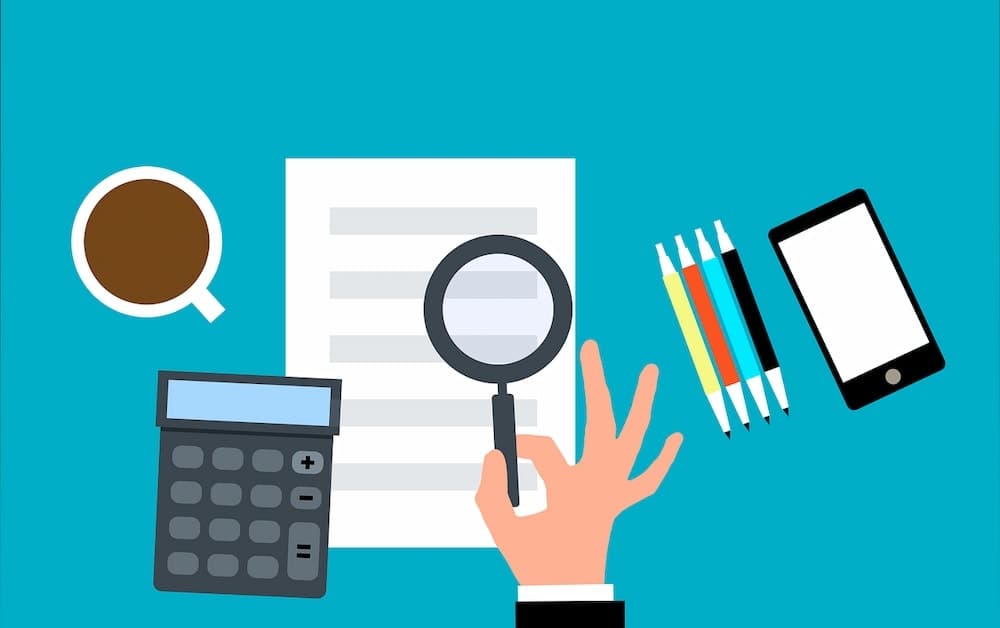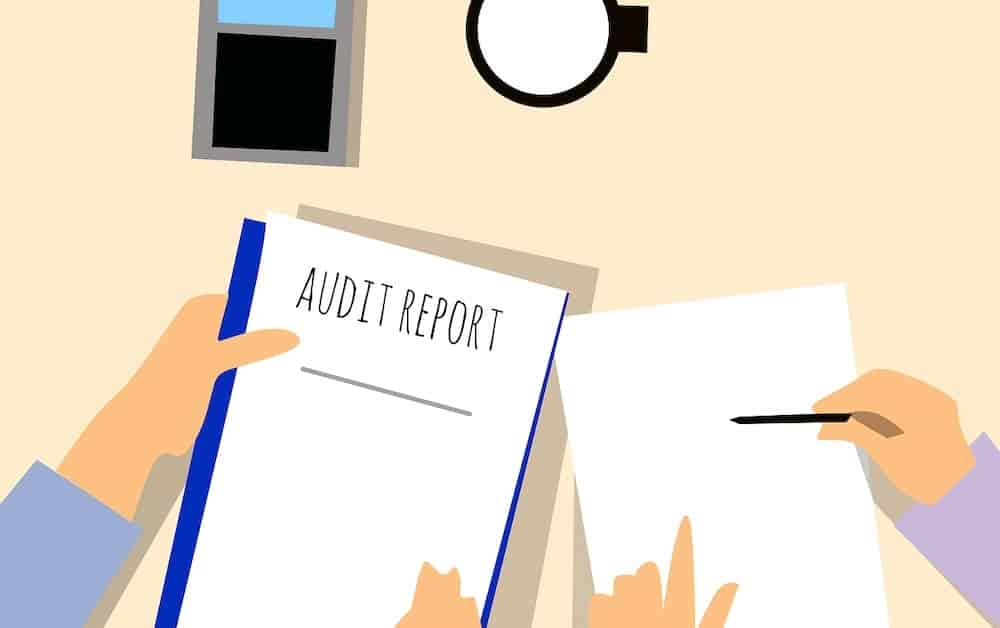In an era where data breaches and privacy violations dominate headlines, conducting a comprehensive data privacy audit is more crucial than ever. Organizations face mounting pressure to comply with stringent data protection laws like the General Data Protection Regulation (GDPR) and the California Consumer Privacy Act (CCPA). A well-executed data privacy audit ensures data privacy compliance, protects sensitive data, and builds trust with customers and stakeholders.
This detailed guide explores the essential steps to conducting a successful data privacy audit, covering everything from preparation to post-audit improvements. By understanding the nuances of data protection, mapping data flows, and assessing risks, organizations can fortify their data privacy practices.
Introduction
Data privacy is no longer optional—it’s a mandate for businesses operating in a data-driven world. As cyberattacks and data breaches continue to escalate, organizations must take proactive steps to protect sensitive data and comply with data privacy laws. A data privacy audit is a systematic approach to identifying weaknesses, ensuring compliance with data protection laws, and implementing robust data security measures.
A successful data privacy audit requires meticulous planning, collaboration across departments, and an unwavering commitment to protecting personal data. By addressing privacy risks and aligning practices with regulatory requirements, organizations can enhance their data privacy programs and reduce the risk of non-compliance.
Preparing for a Data Privacy Audit

Define the Scope and Objectives
Setting a clear scope and defined objectives is foundational to a successful audit. Without these, the process risks becoming unfocused, leaving critical areas unaddressed.
Identify Audit Scope: Begin by pinpointing which aspects of your organization’s data privacy practices will be evaluated. This could include compliance with specific regulations, such as GDPR, CCPA, or sector-specific privacy laws, and internal data handling practices.
Set Goals: Clearly outline your objectives, such as verifying consent mechanisms, ensuring compliance with data breach notification requirements, or enhancing data classification procedures.
Determine Audit Coverage: Define the categories of personal and sensitive data under review. This includes customer data, employee records, and third-party vendor data. Utilize data mapping to map out processes, systems, and data flows to ensure comprehensive coverage.
Tailor to Industry Needs: Focus on specific privacy risks or legal requirements relevant to your industry, such as health data under HIPAA or financial data governed by PCI DSS.
Assemble the Audit Team
The strength of your audit team can determine the success of the audit. Building a multidisciplinary team ensures that all aspects of data privacy and security are thoroughly assessed.
Select Key Members: Include representatives from IT, legal, compliance, and business units that handle personal data. Each member should understand relevant privacy regulations and organizational policies.
Appoint a Leader: Designate a Data Protection Officer (DPO) or another experienced leader to oversee the audit process, ensure timelines are met, and maintain focus on objectives.
Consider External Expertise: Engage external auditors or consultants with specialized knowledge of data privacy regulations, especially for industries with complex compliance requirements. They provide an unbiased perspective and expertise in advanced auditing methodologies.
Collect and Organize Key Documents
Collecting and organizing key documents is a crucial step in the data privacy audit process. This involves gathering all relevant documents that relate to data protection, including:
Data Protection Policies and Procedures: Ensure these documents are up-to-date and reflect current practices.
Data Processing Agreements: Review agreements with third parties to ensure they comply with data protection laws.
Security Measures and Protocols: Compile documentation on the security measures in place to protect sensitive data.
Previous Internal Audit Reports: Gather reports from past audits to identify recurring issues and improvements.
Documentation on Data Subject Rights: Ensure records of how data subject rights are managed and fulfilled.
Incident Response Protocols: Collect protocols for responding to data breaches and other incidents.
Consent Management Policies: Review policies on how consent is obtained, recorded, and managed.
These documents should be compiled in advance of the audit and made available to the audit team. A well-organized collection of documents will save time and provide a clear picture of the organization’s current data protection practices. It is essential to ensure that all documents are up-to-date and reflect current data protection practices. This involves reviewing and updating policies and procedures to ensure compliance with relevant data protection laws and regulations.
Understanding Data Protection Laws and Regulations

Overview of Data Protection Laws
A comprehensive understanding of data protection laws is crucial to conducting a successful audit. These regulations establish the framework for protecting personal data and maintaining accountability.
Global Regulations: Familiarize yourself with key laws, including GDPR in Europe, CCPA in California, and LGPD in Brazil. Each regulation has unique provisions regarding data processing, storage, and data subject rights.
Data Security Audit: Conducting a data security audit is essential for evaluating an organization’s assets and processes to ensure information safety. It helps identify vulnerabilities, ensure compliance with security standards, and generate comprehensive reports to aid in remediation efforts. Establishing a clear scope for the audit enhances collaboration between the organization and the audit provider.
Key Principles: Regulations often emphasize principles like transparency, accountability, and data minimization. For example, GDPR requires organizations to demonstrate how they protect personal data and uphold individuals’ rights.
Cross-Border Implications: Understand the extraterritorial reach of regulations like GDPR, which applies to organizations processing data of EU residents, regardless of their location.
Data Protection Impact Assessment (DPIA)
A DPIA is a critical tool for evaluating the privacy risks associated with data processing activities. It is a proactive measure required under laws like GDPR for high-risk processing operations.
Risk Assessment: Identify processing activities that pose risks to individuals’ rights, such as large-scale data analytics or sensitive data handling. Assess the likelihood and potential consequences of data breaches or misuse.
Mitigation Strategies: Develop actionable steps to minimize identified risks. For example, introduce encryption for sensitive data, tighten access controls, or limit the scope of data collection.
Regulatory Compliance: DPIAs help organizations demonstrate compliance with data protection laws by showing a commitment to safeguarding personal data.
Conducting a Data Privacy Audit

Review Privacy Policies and Procedures
Privacy policies and procedures form the backbone of your data privacy program. An audit should ensure that these documents align with regulatory requirements and accurately reflect your practices.
Evaluate Policy Clarity: Privacy policies must be transparent and understandable to users. They should clearly outline data collection, processing, and sharing practices, as well as data subject rights.
Verify Compliance: Check that your policies meet legal standards. For example, GDPR mandates that organizations inform users about their right to withdraw consent, access their data, and request deletion.
Update as Needed: Privacy notices should be updated to reflect changes in data flows, third-party partnerships, or new regulatory requirements.
Map Data Flows Throughout Your Organization
Mapping data flows provides a clear picture of how data is collected, processed, stored, and shared. This step is critical for identifying vulnerabilities and ensuring compliance.
Visual Mapping: Create diagrams showing the movement of data within your systems and between external entities. Tools like Lucidchart or Varonis can simplify this process.
Identify Risks: Highlight points where sensitive data might be exposed to unauthorized access or misuse, such as during transfers to third-party vendors. Conducting regular data security audits can help identify these vulnerabilities and ensure compliance with security standards.
Validate Data Accuracy: Confirm that the data collected aligns with the intended purpose and that unnecessary data processing activities are eliminated.
Evaluate Third-Party Data Handling Practices
Evaluating third-party data handling practices is a critical step in the data privacy audit process. This involves reviewing the data handling practices of third-party vendors, service providers, and contractors to ensure they meet the organization’s data protection standards.
This includes:
Reviewing Contracts and Agreements: Ensure that contracts with third-party vendors include clauses that require compliance with data protection laws.
Assessing Data Protection Policies: Evaluate the data protection policies and procedures of third-party vendors to ensure they align with your organization’s standards.
Evaluating Security Measures: Review the security measures and protocols in place to protect sensitive data handled by third parties.
Incident Response Protocols: Ensure that third-party vendors have robust incident response protocols and data breach notification procedures.
It is essential to ensure that third-party vendors are compliant with relevant data protection laws and regulations, including the General Data Protection Regulation (GDPR) and the California Consumer Privacy Act (CCPA). By thoroughly evaluating third-party data handling practices, organizations can mitigate risks and ensure that sensitive data is protected throughout the data supply chain.
Assess Compliance with Data Protection Regulations
Comparing your organization’s data practices with applicable laws helps identify gaps in compliance.
Thorough Assessment: Evaluate areas such as consent management, data security measures, and data subject rights fulfillment. For example, assess whether your consent mechanisms meet GDPR’s requirement for explicit and informed consent.
Legal Updates: Stay informed about changes in privacy laws and adjust practices accordingly. This ensures your organization remains compliant over time.
Implementing Remediations and Changes

Plan and Implement Remediations
The findings of your audit should lead to a well-structured remediation plan that addresses identified weaknesses.
Prioritize Risks: Focus first on high-risk issues, such as inadequate data encryption or non-compliant data-sharing practices.
Actionable Steps: Assign responsibilities, set timelines, and establish measurable outcomes for each remediation effort.
Ensure Sustainability: Implement changes that are not only effective but also sustainable. For example, automated compliance monitoring tools can provide long-term benefits.
Compile a Detailed Audit Report
Compiling a detailed audit report is a critical step in the data privacy audit process. The report should summarize the findings of the audit, highlighting both strengths and areas for improvement.
The report should include:
An Executive Summary: Provide a high-level overview of the audit findings and key recommendations.
Audit Scope and Methodology: Detail the scope of the audit and the methodologies used to conduct it.
Findings and Recommendations: Summarize the audit findings, including any compliance gaps and areas for improvement. Provide actionable recommendations to address identified issues.
Action Plan for Remediation: Outline a clear action plan for implementing remediation measures, including timelines and responsible parties.
The report should be clear and concise, providing a roadmap for future improvements. It is essential to ensure that the report is accurate and comprehensive, reflecting the findings of the audit. A well-compiled audit report not only helps in addressing current issues but also serves as a valuable reference for future audits and compliance efforts.
Monitor and Review
Continuous monitoring is vital for maintaining compliance and protecting sensitive data.
Regular Audits: Schedule periodic data privacy audits and conduct regular data security audits to identify new risks, assess an organization’s vulnerabilities, and evaluate the effectiveness of implemented measures. These audits serve as a proactive measure to prevent potentially devastating data breaches.
Update Mechanisms: Incorporate regular training sessions, policy reviews, and system upgrades into your privacy program to ensure ongoing compliance.
Post-Audit Activities
Post-audit activities are essential to ensure ongoing compliance with data protection laws and regulations. This includes:
Documenting Findings and Planning Next Steps: Record the audit findings and develop a plan to address identified issues.
Implementing Remediation Plans: Execute the remediation plans outlined in the audit report, focusing on high-priority areas first.
Scheduling Follow-Up Audits: Plan regular follow-up audits to track progress and ensure continuous compliance.
It is essential to ensure that post-audit activities are completed in a timely and effective manner to maintain ongoing compliance. By addressing the findings of the audit and implementing necessary changes, organizations can strengthen their data protection practices and reduce the risk of data breaches and regulatory non-compliance.
Schedule Follow-Up Audits
Scheduling follow-up audits is essential to ensure ongoing compliance with data protection laws and regulations. This involves scheduling regular audits to track progress and adapt to new data protection regulations.
Follow-up audits should be scheduled at regular intervals, such as every 6-12 months, to ensure ongoing compliance. It is essential to ensure that follow-up audits are completed in a timely and effective manner to maintain ongoing compliance.
By following these steps, organizations can ensure that they are compliant with data protection laws and regulations, protecting sensitive data and maintaining trust with stakeholders. Regular follow-up audits help identify new risks, evaluate the effectiveness of implemented measures, and ensure that data protection practices evolve with changing regulatory requirements.
Best Practices and Common Mistakes

Best Practices for Effective Data Privacy Audits
Adhering to best practices ensures a successful and comprehensive audit process.
Document Everything: Maintain detailed records of audit findings, remediation plans, and updates. This documentation is invaluable for demonstrating compliance to regulators.
Foster Awareness: Train employees on data privacy regulations, security measures, and their role in protecting sensitive data. A privacy-aware workforce reduces the risk of breaches and non-compliance.
Leverage Technology: Utilize tools like data discovery software to locate and classify data, and identity management systems to enforce access controls.
Common Mistakes to Avoid
Avoiding common errors can save time, resources, and potential penalties.
Unclear Objectives: Starting an audit without clear goals can lead to incomplete or unfocused assessments.
Overlooking Third Parties: Ensure that vendors and partners comply with data protection laws, as their non-compliance can have legal and reputational consequences for your organization.
Neglecting Documentation: Insufficient documentation may hinder your ability to prove compliance during regulatory inspections.
Conclusion
A data privacy audit is an indispensable part of protecting personal data and ensuring compliance with data protection laws. From defining the audit scope to implementing remediations, every step requires attention to detail and a commitment to continuous improvement.
By following this guide, organizations can strengthen their data privacy programs, enhance customer trust, and mitigate the risks of data breaches and regulatory non-compliance. Achieving and maintaining robust data protection is not just about adhering to legal requirements—it’s about building a culture of privacy that safeguards the interests of all stakeholders.



